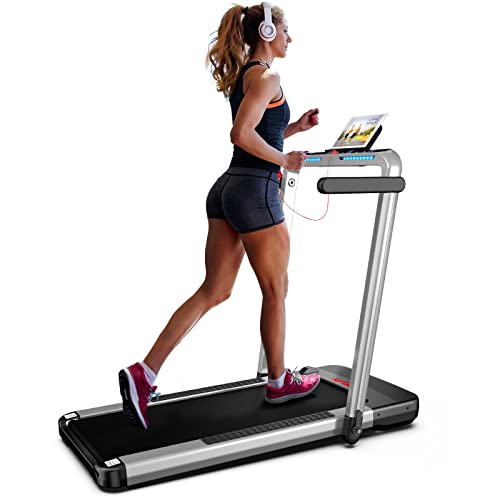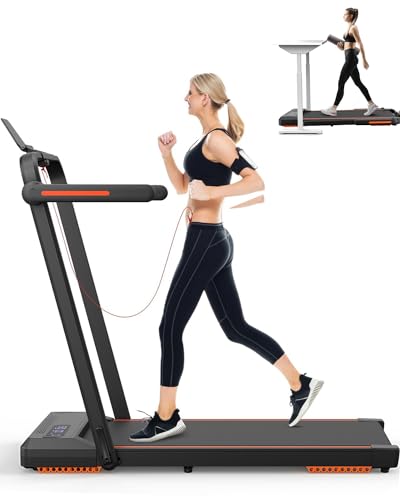
Treadmill Brands
FollowOverview
-
Founded Date 22 November 2024
-
Sectors BPO
-
Posted Jobs 0
-
Viewed 3
Company Description
You’ll Never Guess This Tread Mill’s Benefits

The Treadmill: A Comprehensive Guide to Understanding and Utilizing This Fitness Machine
Treadmills are a staple in health clubs and homes alike, acting as a reliable tool for cardiovascular exercise. With their adaptability and range of functions, treadmills accommodate users of all physical fitness levels. This short article digs into the ins and outs of treadmills– covering their advantages, types, use suggestions, maintenance, and much more.
The Benefits of Using a Treadmill
Making use of a treadmill can offer numerous health advantages, making it a popular choice amongst physical fitness enthusiasts. Below are some essential benefits:
-
Cardiovascular Health: Regular treadmill usage can enhance heart health by increasing aerobic capacity and cardiovascular endurance.
-
Weight Management: Treadmills enable users to burn calories effectively, helping in weight loss or management.
-
Convenience: With the ability to work out inside, treadmills get rid of environmental barriers, like weather condition and time constraints.
-
Adaptability: Users can control speed, incline, and exercise duration, allowing them to tailor their exercise routine to fit their requirements.
-
Joint Impact: Many modern-day treadmills provide cushioning, which can decrease the effect on joints compared to running on hard surfaces.
This comprehensive guide examines the various kinds of treadmills and what functions to think about when purchasing one.
Types of Treadmills
Selecting the ideal type of treadmill depends upon private physical fitness objectives, budget plan, and available space. Here are the various ranges:
1. Handbook Treadmills
- Definition: Tread mill These treadmills run without motors; users power the belt through their movements.
- Advantages: Typically more economical and energy-efficient.
- Downsides: Limited features and less stability compared to motorized alternatives.
2. Motorized Treadmills
- Meaning: Equipped with motors to manage belt speed and incline.
- Advantages: Versatile includes like pre-programmed programs and digital display screens.
- Drawbacks: More expensive and require electrical outlets.
3. Folding Treadmills
- Meaning: Treadmills that can be collapsed to save space when not in usage.
- Advantages: Ideal for those with limited space.
- Downsides: May not be as sturdy, depending upon the model.
4. Commercial Treadmills
- Definition: High-quality, durable machines designed for regular usage in health clubs.
- Benefits: Built to stand up to rigorous workouts with functions matched for varied training requirements.
- Drawbacks: Generally more expensive and bigger.
5. Smart Treadmills
- Definition: Treadmills geared up with wise technology that tracks exercises and provides virtual training.
- Benefits: Interactive functions improve the user experience.
- Downsides: Higher expenses and potential for technical concerns.
Functions to Consider When Buying a Treadmill
When acquiring a treadmill, it’s important to evaluate its functions according to individual needs and budget. Important functions include:
-
Motor Power: Measured in horse power (HP); a motor in between 2.0– 3.0 HP is ideal for the majority of users.
-
Running Surface: The belt size should accommodate your stride. A surface area of at least 20″ x 55″ is normally advised.
-
Incline Options: Look for a treadmill offering different incline levels to imitate outside running and increase exercise intensity.
-
Weight Capacity: Ensure the treadmill can support the user’s weight; most can accommodate weights between 250 lbs and 400 lbs.
-
Cushioning: Good quality cushioning effects walking or running convenience and can assist prevent injuries.
-
Foldability: If space is a concern, think about a treadmill that can be folded.
-
Technology: Features like heart rate screens, workout programs, and Bluetooth connection can boost the user experience.
Table: Key Features and Considerations
| Function | Importance |
|---|---|
| Motor Power | Essential for constant efficiency and user weight capability. |
| Running Surface | Effects user convenience and stride length; larger surfaces are better for taller people. |
| Slope Options | Enables varied exercises and targets different muscle groups. |
| Weight Capacity | Important for security and resilience; choose a model that supports your weight. |
| Cushioning | Decreases joint impact and makes exercises more comfy. |
| Foldability | Essential for users with limited space. |
| Innovation | Improves workout experience and can offer important tracking data. |
Tips for Effective Treadmill Workouts
To optimize the advantages of using a treadmill, consider the following suggestions:
-
Warm-Up and Cool-Down: Always begin with a 5-10 minute warm-up and finish with a cool-down to avoid injury.
-
Differ Your Workouts: Mix walking, jogging, and going to keep things interesting and work different muscle groups.
-
Integrate Incline: Use slope settings to challenge yourself and increase calorie burn.
-
Stay Hydrated: Keep water nearby to remain hydrated throughout your workouts.
-
Listen to Your Body: Pay attention to any discomfort or fatigue; rest when necessary.
Treadmill Maintenance Tips
To guarantee longevity and optimal efficiency of a treadmill, regular maintenance is crucial. Key maintenance practices include:
-
Lubrication: Frequently lube the running belt for smoother operation.
-
Cleaning: Wipe down the machine after each usage to prevent dust and sweat accumulation.
-
Tightening up: Regularly examine and tighten up loose bolts or screws.
-
Examine the Belt Alignment: Ensure the belt is lined up correctly, adjusting as required for even wear.
Frequently Asked Questions (FAQs)
1. How typically should I utilize a treadmill for weight-loss?
Using a treadmill for at least 150 minutes of moderate-intensity aerobic exercise per week can add to weight reduction.
2. Can I walk on a treadmill every day?
Yes, walking on a treadmill daily can be useful; nevertheless, incorporating rest days is advisable to avoid overuse injuries.
3. What should I wear when utilizing a treadmill?
Opt for comfy, moisture-wicking clothing and supportive footwear to improve your workout experience.
4. Is it much better to walk or work on a treadmill?
Both walking and running offer special advantages; the very best choice depends on your physical fitness level, objectives, and personal choice.

5. Are there particular treadmills developed for little areas?
Yes, folding treadmills and compact styles are ideal for little areas. Constantly examine measurements before buying.
The treadmill remains a flexible and extensively utilized piece of physical fitness equipment. Its blend of convenience, flexibility, and efficiency makes it ideal for users ranging from newbies to seasoned professional athletes. By comprehending the different types and features, in addition to including diverse exercises, users can make the most of the benefits of their treadmill routine. Whether for cardiovascular training, weight loss, or merely preserving an active way of life, treadmills offer a reputable avenue for achieving fitness objectives.


